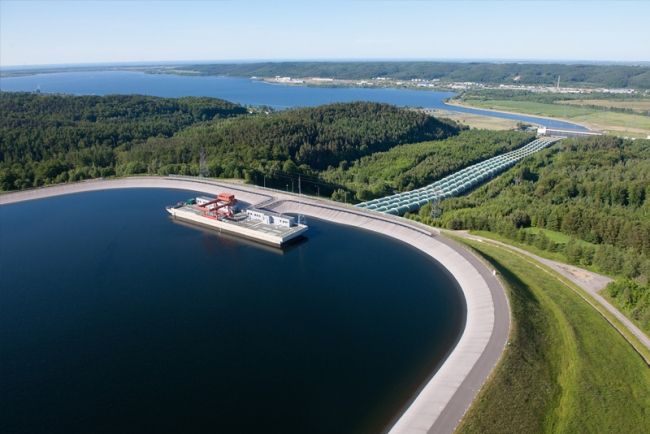Poland is to resume work on what will be its largest hydroelectric plant, 50 years after construction first began and 33 years after the project was abandoned.
Plans for the power plant in the village of Młoty, southwestern Poland, were initially drawn up in the 1960s. Construction started in 1972, but was halted after nine years later due to a series of problems. In 1989 the project was abandoned.
Now work on the facility is set to resume, the prime minister’s chief of staff, Michał Dwoczyk, has announced. With a capacity of 750 MW, it will be the largest hydroelectric plant in Poland.
Like other such large-scale plants in Poland (such as the one in Żarnowiec, pictured above), Młoty will be a pumped-storage hydroelectricity facility. During times of low energy demand, water is pumped upwards to a reservoir. At times of high demand, that water is released through turbines to generate electricity.
“In the event of a failure of another significant source [of power], it will protect the system against possible shortages in the power system,” wrote Dworczyk.
Meanwhile, the reservoir created for water storage “will also perform retention and recreational functions”, thereby “contributing to the development of the Kłodzko Valley” in which it is located, added Dworczyk.
The planning team for the project includes representatives from state-run utilities giant PGE and the National Fund for Environmental Protection and Water Management, a state body attached to the environment ministry.
Financial news website Money.pl reported last May, when PGE was carrying out an economic analysis of reviving the Młoty plant, that the cost of construction would be around 3 to 4 billion zloty (€662-882 million).
According to website Opuszczone, which tracks abandoned spots in Poland, the narrow tunnels of the incomplete power plant have in the past three decades been overrun by bats and their entrances overgrown by dense forest.
Poland currently has six other hydroelectric plants, in Żarnowiec (716 MW), Porąbka-Żar (500 MW), Solina-Myczkowce (200 MW), Żydowo (167 MW), Czorsztyn-Niedzica-Sromowce Wyżne (94.6 MW) and Dychów (90 MW).
Main image credit: PGEEO

Maria Wilczek is deputy editor of Notes from Poland. She is a regular writer for The Times, The Economist and Al Jazeera English, and has also featured in Foreign Policy, Politico Europe, The Spectator and Gazeta Wyborcza.



















